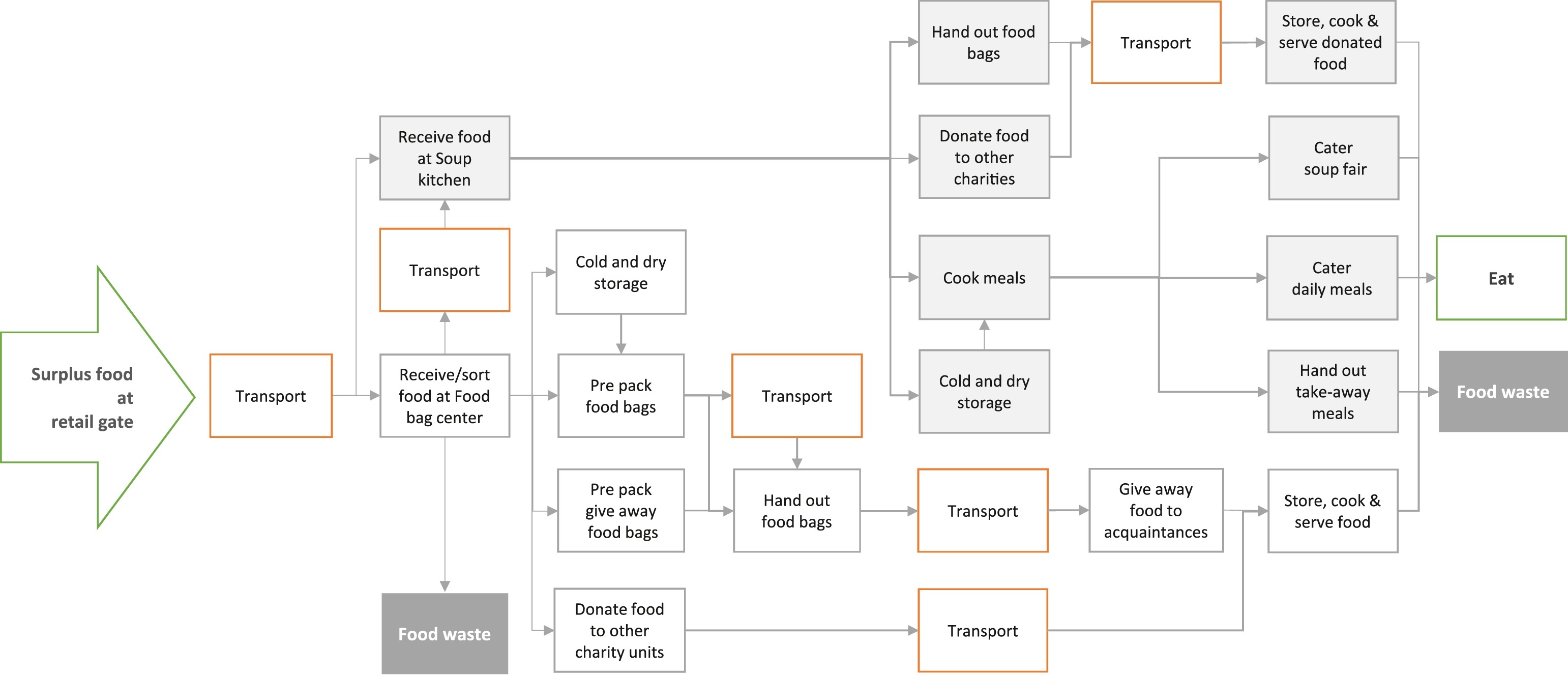Surplus food redistribution can be a way to relieve co -existing food insecurity and food waste. The food waste hierarchy ranks surplus food donations for human consumption as the next best strategy, when food waste cannot be prevented. However, the effectiveness of food donation in terms of the amount consumed, or food donation as a food waste management measure have rarely been assessed. The few studies conducted to date report substantial environmental savings, but the results may be sensitive to assumptions regarding substituted food. Rebound effects are also not included, but are likely to offset environmental savings from food donation. Therefore, this study investigated the effectiveness, carbon footprint, and rebound effect of a food donation system run by a charity in Sweden, and compared the results with those of anaerobic digestion.

Multiple analytical methods were used, including material flow analysis, life cycle assessment, questionnaire, and 24-hour dietary recall. In the life cycle assessment, carbon footprint of substituted products were credited to the overall results using a system expansion. In addition, direct and indirect rebound effects associated with re-spending of substitution-related monetary savings were included. The results revealed a complex but effective network aimed at salvaging as much of the redistributed food as possible, with 78% of redistributed food eaten, but there was also a substantial rebound effect, offsetting 51% of potential carbon emissions savings from food donation. Nonetheless, the net result of food donation was almost twice the climate benefit of anaerobic digestion (-0.40 vs. -0.22 kg CO2e/FU), supporting the food waste hierarchy.